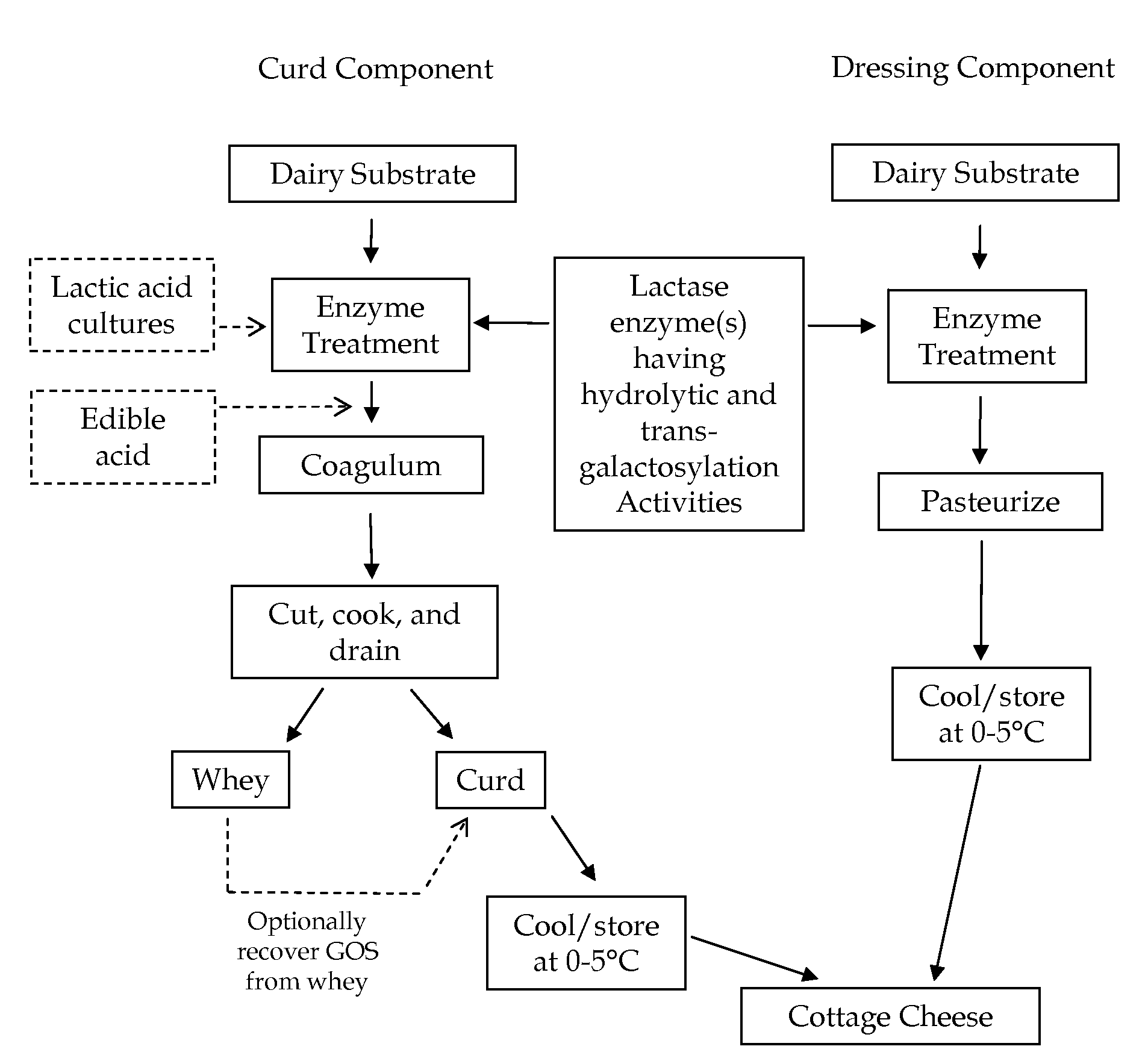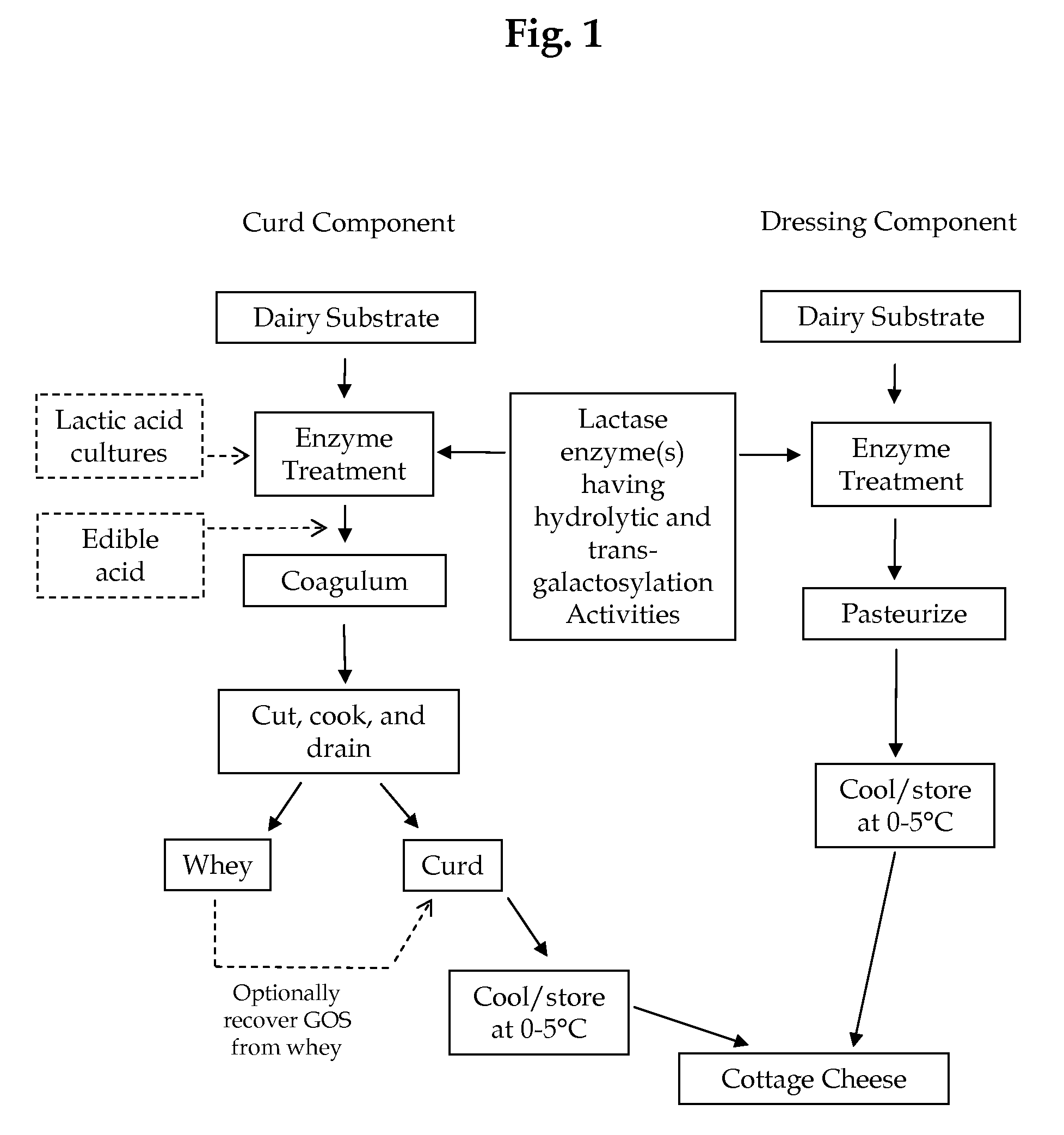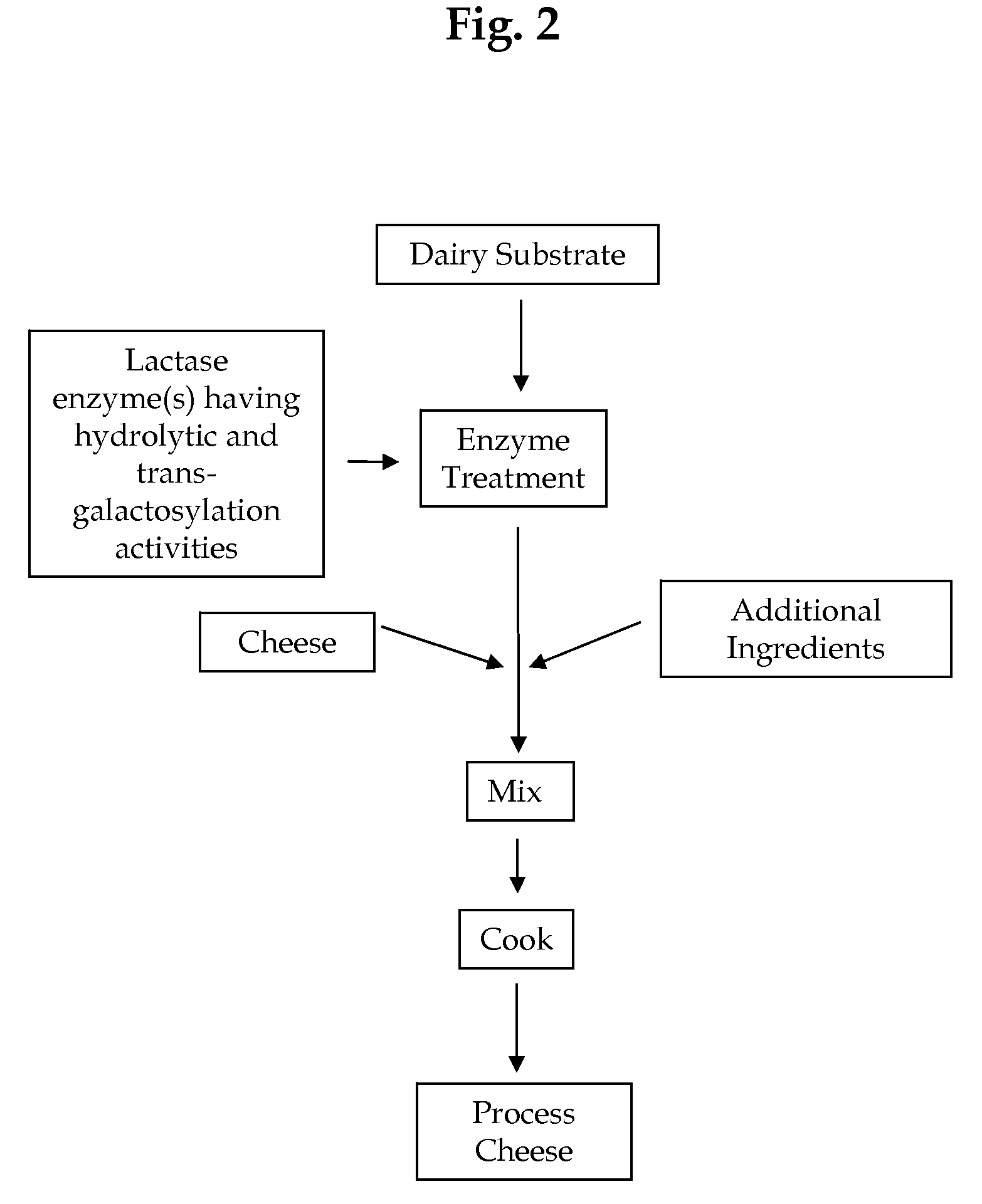Cheese Products Containing Galacto-Oligosaccharides And Having Reduced Lactose Levels
a technology of galactooligosaccharides and cheese products, which is applied in the field of cheese products containing galactooligosaccharides and having reduced lactose levels, can solve the problems of poor lactose digestion, insufficient lactose digestion, and difficulty in avoiding food products containing lactose for consumers, so as to reduce lactose levels, increase the level of galactooligosaccharides, and the effect of reducing
- Summary
- Abstract
- Description
- Claims
- Application Information
AI Technical Summary
Benefits of technology
Problems solved by technology
Method used
Image
Examples
example 1
[0105]This example illustrates the process of the invention shown in FIG. 3. A cream cheese product was prepared using the following process: (1) mixed 25.1 kg cream, 36.95 kg water, 1.45 kg dried whey (Associated Milk Producers, Inc., Blair, Wis.) and 9.23 kg WPC50 (50 percent whey protein concentrate from Associated Milk Producers, Inc., Blair, Wis.) to form a dairy substrate; (2) preheated the dairy substrate to 60° C. and homogenizing the dairy substrate at 5000 / 500 psi using a Gaulin two-stage homogenizer (APV, Lake Mills, Wis.); and (3) pasteurized the homogenized dairy substrate in a plate heat exchanger at 81.1° C. for about 22 seconds and then cooling the homogenized dairy substrate in the plate to 22° C. The cooled dairy substrate was then divided and used to prepare cream cheese products using both inventive and a control method without enzyme addition as described below.
[0106]The inventive sample was prepared as follows: 100 g of the dairy substrate was treated with 0.02...
example 2
[0110]This example illustrates another embodiment according to FIG. 3 and is similar to Example 1 but adds cream after enzyme acidification and uses cream cheese cultures for acidification. A slurry containing 9.93 kg water, 8.57 kg WPC50, and 1.36 kg dried whey was heated at 27° C. for 22 seconds and homogenized at 5000 / 500 psi using a Gaulin two-stage homogenizer (APV, Lake Mills, Wis.). The homogenized slurry was blended with 0.05 percent Biolacta enzyme and incubated for 1 hour at 60° C. A portion of this slurry (18.36 kg) was then mixed with 20.88 kg cream and 23.8 kg water. For purposes of comparison, the final percentage of each ingredient is approximately the same as in Example 1. The mixture was preheated to 60° C., homogenized at 5000 / 500 psi using a Gaulin two-stage homogenizer, pasteurized at 81.1° C. for about 22 seconds, cooled to 22° C., inoculated with cream cheese cultures (DVS DX-37B, Chr. Hansen, Milwaukee, Wis.) and cultured overnight at 20° C. The cultured mixtu...
PUM
 Login to View More
Login to View More Abstract
Description
Claims
Application Information
 Login to View More
Login to View More - R&D
- Intellectual Property
- Life Sciences
- Materials
- Tech Scout
- Unparalleled Data Quality
- Higher Quality Content
- 60% Fewer Hallucinations
Browse by: Latest US Patents, China's latest patents, Technical Efficacy Thesaurus, Application Domain, Technology Topic, Popular Technical Reports.
© 2025 PatSnap. All rights reserved.Legal|Privacy policy|Modern Slavery Act Transparency Statement|Sitemap|About US| Contact US: help@patsnap.com



